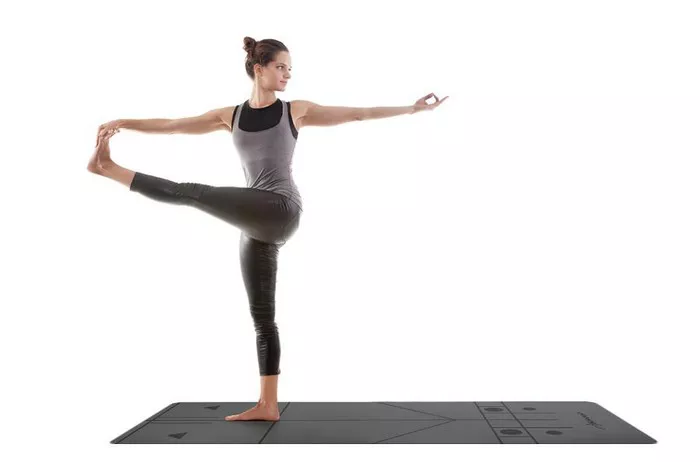In recent years, anti-gravity yoga has become increasingly popular, attracting yoga enthusiasts and fitness lovers alike. This unique form of yoga incorporates suspended silks, enabling practitioners to perform poses in mid-air. The practice not only challenges your flexibility, strength, and balance but also provides a fun and exciting way to burn calories. If you’re wondering how many calories anti-gravity yoga can help you burn, you’re not alone. Let’s dive into the science behind it, explore the factors that influence calorie burn, and break down the health benefits of anti-gravity yoga.
What is Anti-Gravity Yoga?
Before exploring how many calories anti-gravity yoga can burn, it’s important to understand what the practice involves.
Anti-gravity yoga, also known as aerial yoga, involves using a hammock or silk fabric suspended from the ceiling to support the body during various poses. This technique allows practitioners to experience the benefits of traditional yoga while using gravity-defying movements. The hammock provides support for more complex poses, enabling individuals to explore their range of motion and gain flexibility without putting excessive strain on their joints.
Anti-gravity yoga merges principles of traditional yoga, Pilates, dance, and acrobatics. This mix offers an exciting and dynamic way to strengthen the body, improve flexibility, and challenge the mind.
How Does Anti-Gravity Yoga Burn Calories?
The number of calories burned during any exercise depends on several factors, including your body weight, intensity of the practice, and the duration of the session. Anti-gravity yoga is no different.
1. Intensity of the Practice
One of the main factors that influences the calorie burn in anti-gravity yoga is the intensity of the session. In some classes, you may be performing gentle stretching and restorative poses, which will not burn as many calories. On the other hand, more intense sessions that incorporate dynamic movements and acrobatic poses can significantly increase the number of calories burned.
When your body is suspended in the hammock, your muscles are forced to engage more than they would in traditional yoga poses, as you must work harder to stabilize yourself and maintain control while being in the air. This added challenge causes your muscles to burn more energy, which results in a higher calorie expenditure.
2. Duration of the Session
The length of your anti-gravity yoga class will also determine how many calories you burn. A typical anti-gravity yoga session lasts between 45 minutes to an hour. During this time, your body will be actively engaged in a variety of poses, from gentle stretches to more strenuous inversions, helping to keep your heart rate up and burn calories.
A 60-minute anti-gravity yoga session can burn anywhere between 300 to 600 calories, depending on the intensity and the individual’s body weight. Keep in mind that people with higher body mass generally burn more calories than those with lower body mass, so your individual calorie burn will vary.
3. Body Weight and Composition
As mentioned earlier, your body weight plays a significant role in how many calories you burn during an anti-gravity yoga class. Larger individuals tend to burn more calories due to the increased energy required to move a larger body mass. Additionally, individuals with more muscle mass tend to burn more calories compared to those with a higher percentage of body fat.
It’s essential to remember that muscle burns more calories at rest compared to fat. Therefore, as you build lean muscle through regular anti-gravity yoga practice, you may find that your resting metabolic rate increases, allowing you to burn more calories throughout the day.
4. Type of Poses and Movements
The specific poses you perform also affect calorie burn. Dynamic, full-body movements that engage multiple muscle groups (such as inversions, flips, and core work) will burn more calories than slower, more static poses. For example, performing a series of aerial backbends, handstands, and aerial squats will likely result in a higher calorie burn compared to gentle poses like child’s pose or restorative stretches.
5. Cardiovascular Benefits
Though anti-gravity yoga is not typically thought of as a cardiovascular workout, certain aspects of the practice can still help increase your heart rate, which in turn burns more calories. The acrobatic movements, inversions, and fast-paced transitions challenge your cardiovascular system, providing a mild cardio workout.
While anti-gravity yoga may not burn as many calories as high-intensity cardio workouts like running or cycling, it can still provide significant cardiovascular benefits when performed at a higher intensity. This is particularly beneficial for those who want to combine flexibility training, strength-building, and cardiovascular conditioning in one workout.
How Many Calories Does Anti-Gravity Yoga Burn?
As previously mentioned, the number of calories burned during an anti-gravity yoga session depends on various factors, including your weight, the intensity of the class, and the duration of the session. Here’s a general estimate of the number of calories burned during a typical 60-minute anti-gravity yoga class:
- A person weighing 125 pounds: Burns around 240 to 300 calories.
- A person weighing 155 pounds: Burns around 300 to 400 calories.
- A person weighing 185 pounds: Burns around 400 to 500 calories.
For a more intense session that involves more challenging inversions, flips, and high-energy movement, these figures may increase. If you’re looking to maximize calorie burn, you can always increase the intensity of your practice or opt for more advanced classes.
The Benefits of Anti-Gravity Yoga Beyond Calorie Burn
While burning calories is a key benefit of any physical exercise, anti-gravity yoga offers a host of additional health benefits. Let’s explore some of these advantages.
1. Improves Strength and Flexibility
Anti-gravity yoga challenges both your strength and flexibility. The suspended hammock allows you to perform stretches and poses that you might not be able to do on the ground. This can help increase your range of motion and flexibility, especially in areas like the hips, hamstrings, and spine. It also engages deep core muscles and helps build strength in the arms, legs, and back.
2. Enhances Mental Focus and Relaxation
Because anti-gravity yoga involves balancing your body in mid-air, it requires intense concentration and mental focus. The practice encourages mindfulness, which can reduce stress and promote mental clarity. The use of inversion poses helps promote relaxation by improving circulation and reducing pressure on the heart, which can lead to a deeper sense of calm.
3. Supports Spinal Health
Inversion poses, which are commonly practiced in anti-gravity yoga, can be highly beneficial for spinal health. Hanging upside down or performing inversions helps decompress the spine, which can relieve pressure from the discs and joints in the back. This is particularly helpful for individuals suffering from back pain or poor posture.
4. Boosts Cardiovascular Health
As discussed earlier, anti-gravity yoga can also provide cardiovascular benefits, particularly when performed at a higher intensity. The fluid movements and inversions can help increase heart rate, which in turn can improve cardiovascular health over time.
5. Provides a Fun and Engaging Workout
One of the best aspects of anti-gravity yoga is its fun and playful nature. The feeling of being suspended in mid-air can make the practice feel more like play than a traditional workout. This can increase motivation and make it easier to stick to your fitness routine, leading to more consistent workouts and better results.
How to Maximize Your Calorie Burn with Anti-Gravity Yoga
If your primary goal is to burn calories, there are several things you can do to maximize the calorie-burning potential of your anti-gravity yoga sessions:
- Increase the Intensity: Try to incorporate more dynamic movements, inversions, and challenging poses into your practice. The more your heart rate increases, the more calories you’ll burn.
- Add Interval Training: Incorporate bursts of high-intensity movements followed by short periods of rest to keep your metabolism elevated and burn more calories.
- Focus on Core Engagement: The core is essential in anti-gravity yoga. Actively engage your core muscles throughout the practice to increase calorie burn and strengthen your abdominal muscles.
- Practice Regularly: Consistency is key. The more often you practice, the greater your overall calorie burn and the better your results will be.
Conclusion
Anti-gravity yoga offers a fun and innovative way to burn calories while improving strength, flexibility, and mental well-being. The number of calories you burn in a typical anti-gravity yoga session varies depending on factors such as body weight, the intensity of the session, and the type of movements performed. On average, individuals can burn anywhere from 240 to 600 calories in a 60-minute class.
While anti-gravity yoga may not be as high-intensity as traditional cardio exercises, it still offers an excellent workout that engages your body and mind in a unique and effective way. In addition to calorie burning, it provides a wide range of benefits, including improved flexibility, mental clarity, and spinal health. Whether you’re looking to burn calories, de-stress, or simply try something new, anti-gravity yoga offers a fun and rewarding practice for individuals of all fitness levels.
Related Topics:

















